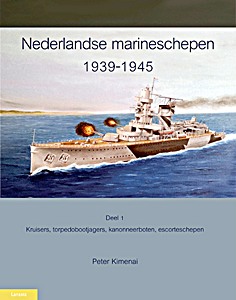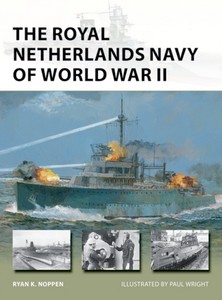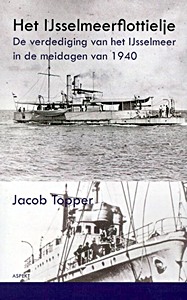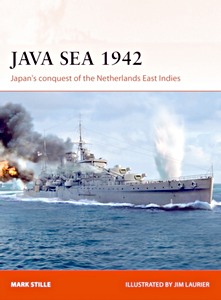Nederlandse Marineschepen 1940-1945 (1) - Schepen van de Koninklijke Marine in de Tweede Wereldoorlog
Vlak voor de Tweede Wereldoorlog werden in Nederland een aantal schepen op stapel gezet om de te kleine oorlogsvloot uit te breiden. Er waren zelfs plannen voor de bouw van drie slagkruisers. Maar toen Duitsland op 10 mei 1940 Nederland binnenviel, één van de grootste koloniale mogendheden ter wereld, moest de Koninklijke Marine in Nederland het stellen met een verouderde kruiser, zes onderzeeboten, negen torpedoboten, een torpedobootjager, veertien kanonneerboten, zeven mijnenleggers, acht mijnenvegers, een antiek pantserschip als drijvende batterij en een tachtigtal vliegtuigen waarvan er misschien tien stuks enige oorlogswaarde hadden.
Dat dit weinige grijs volstrekt ontoereikend was, werd tijdens de Tweede Wereldoorlog pijnlijk duidelijk. De Koninklijke Marine werd op alle fronten verpletterend verslagen. Door de veerkracht en moed van de marinemannen en met hulp van de bondgenoten, kon de Nederlandse zeemacht de strijd tegen de As-mogendheden echter toch voortzetten.
De serie "Nederlandse Marineschepen 1940-1945" beschrijft alle Nederlandse oorlogsschepen waarover de Koninklijke Marine tijdens de Tweede Wereldoorlog kon beschikken. Ook de schepen die tijdens de oorlog aan de vloot toegevoegd werden door nieuwbouw, aankoop of op leenbasis.
Deel 1 van Nederlandse Marineschepen behandelt de kruisers, torpedobootjagers, kanonneerboten en de escortevaartuigen. In de volgende delen zullen de onderzeeboten, mijnenvegers en mijnenjagers, torpedoboten, pantserschepen, bewakings- en patrouillevaartuigen, gemilitariseerde schepen van de Gouvernements Marine, kleinere schepen en hulpschepen aan bod komen.
| Autor: | Peter Kimenai |
|---|---|
| Szczegóły: | 240 strony, 28.5 x 22.5 x 1.8 cm, twarda oprawa |
| Ilustracje: | bogato ilustrowana |
| Wydawca: | Lanasta (NL, 2014) |

Nederlandse Marineschepen 1940-1945 (1) - Schepen van de Koninklijke Marine in de Tweede Wereldoorlog
Język: holenderski
Kup na Amazon PLKup na Amazon DE



